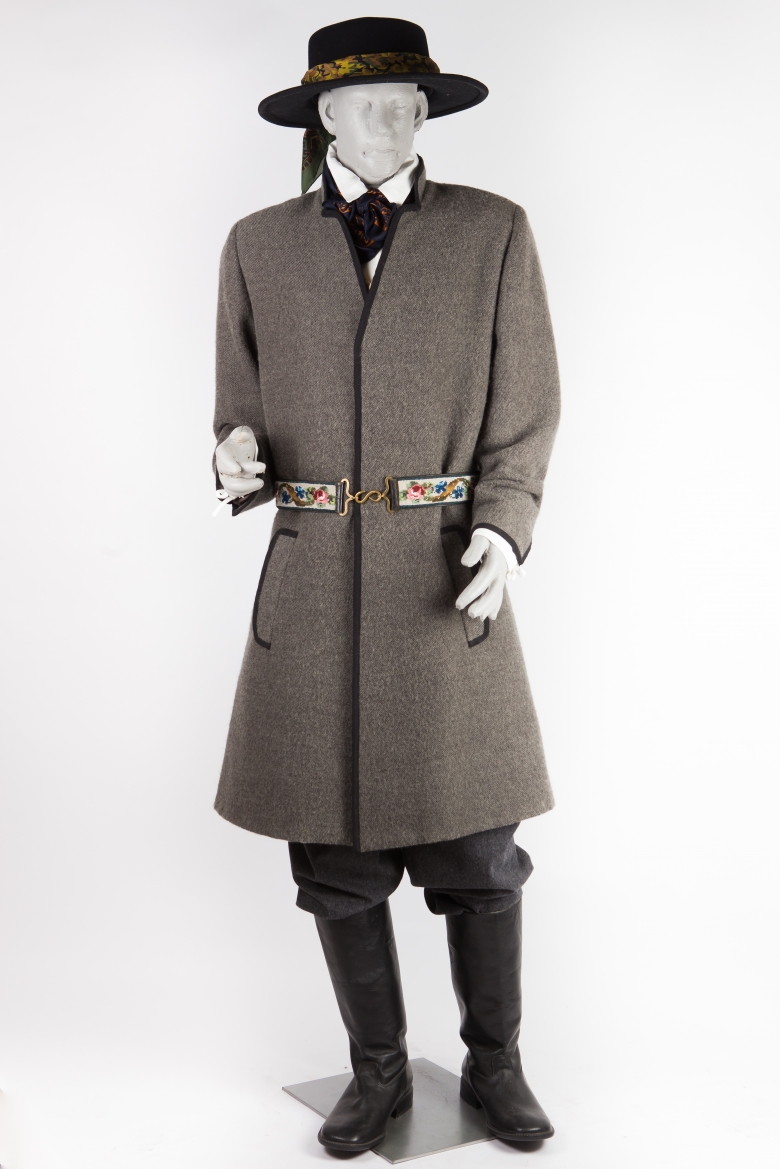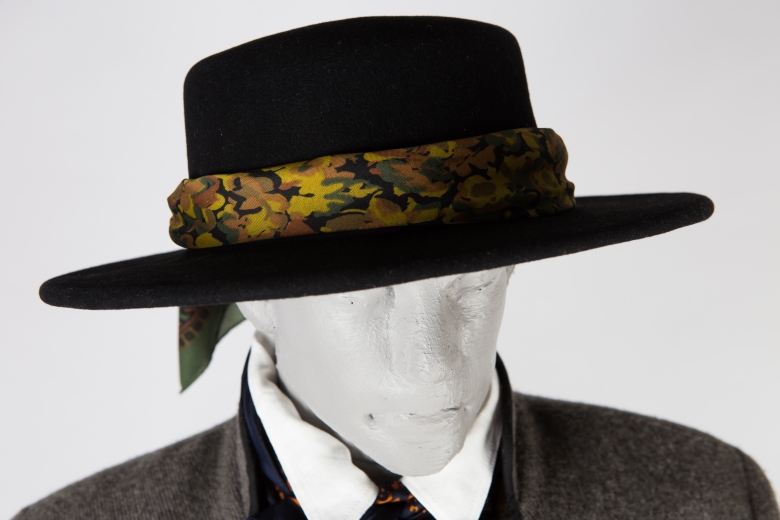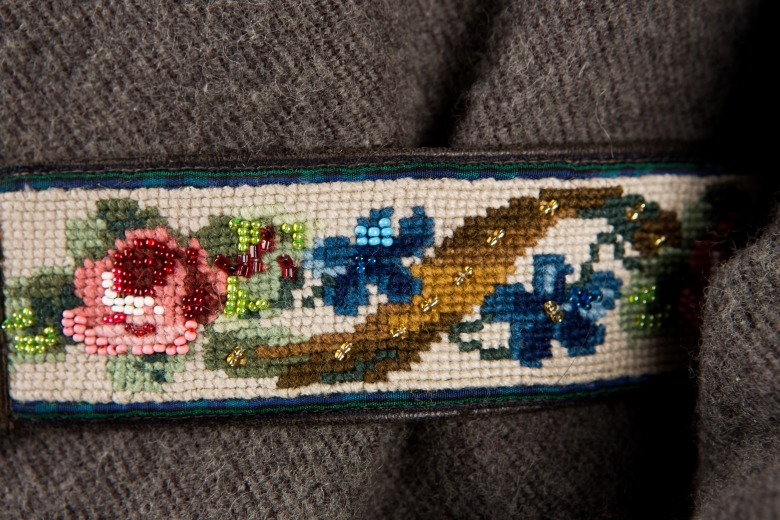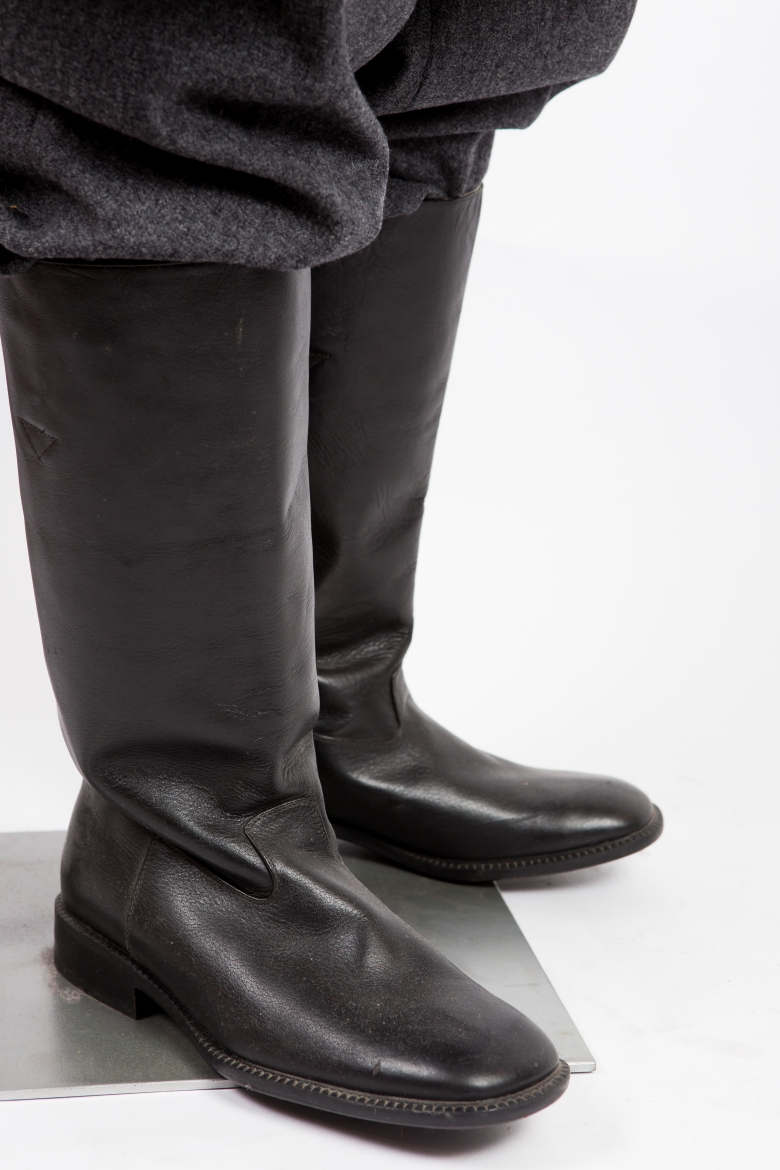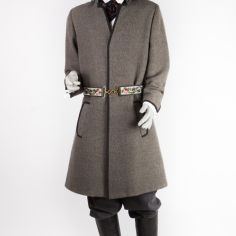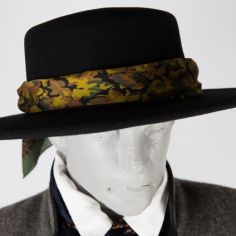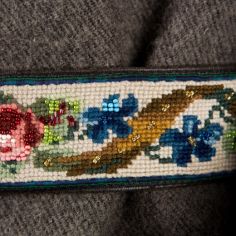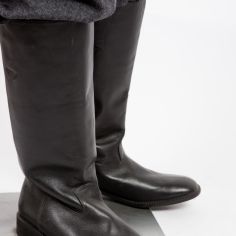Man's Costume from Zemgale
Brief information
- Shirts – fine linen, plain, straight cut with shoulder straps and a narrow banded collar;
- Trousers – dark blue, natural grey, or dark brown wool; the dark blue trousers were knee-length and worn with knitted knee-length socks; grey trousers could also be long;
- Belts – trousers were secured with a leather belt; the long coat was secured with a leather belt or a belt embroidered with glass seed beads;
- Vests – either black or ornate brocade fabric, worn with mid-length coats;
- Head coverings – either a felted wool wide-brim hat, which could have a lengthewise folded silk scarf tied around the crown; alternatively, a peaked cap;
- Footwear – knee-length boots or leather shoes;
- Jewellery – a folded silk scarf served as a tie around the neck.
History and Origin
The men’s clothing from Zemgale is characterized by a linen shirt made of separate, rectangular fabric segments stitched together at the shoulders or a tunic-type shirt where the front and back are made of one contiguous piece of fabric folded over at the shoulders. Shoulder straps are stitched over the seams and fold lines, and there is a one to two centimetre wide banded collar. The shirt is made of fine linen fabric without any embellishment.
There were two type of trousers. The older type of trousers were knee-length and dark blue or grey, worn with knitted knee-length socks, which were fastened below the knee with multi-coloured woven bands. The trousers had fall front fly closures. Long trousers were either natural grey or dark brown in colour.
Trousers were secured with a leather belt. Long coats were worn with a leather belt or a beaded canvas and leather belt.
Coats could be three different lengths: short, mid-length or long. Short coats were worn with knee-length trousers and made of the same fabric. The long coat, with a hemline below the knee, could be of dark blue woollen or grey fabric. Mid-length coats extended to the mid-thigh and were a natural grey colour.
Vests were an option with mid-length coats. The fronts were generally an ornate brocade or black, while backs were a plainer fabric, which was not visible because vests would not have been worn on their own. All vests have either one or two rows of ornate buttons.
Headwear consisted of either a felted wool, wide-brim hat or a peaked cap. A folded scarf could be tied around the crown of the hat.
A folded silk scarf served as a tie around the neck and a sign of affluence.
